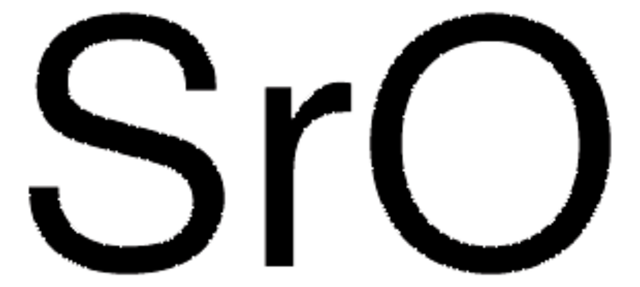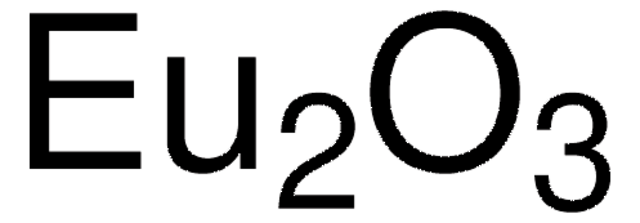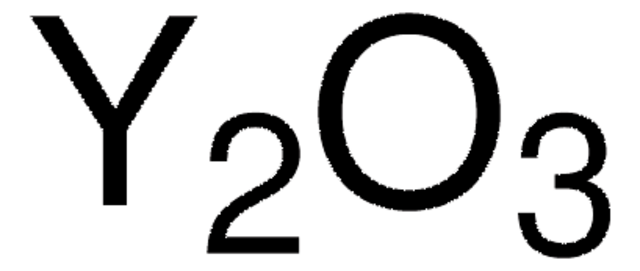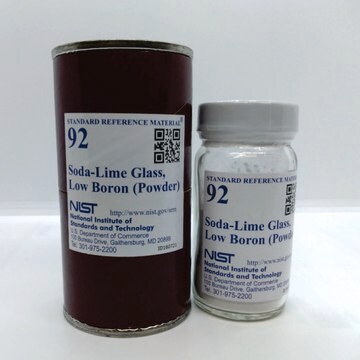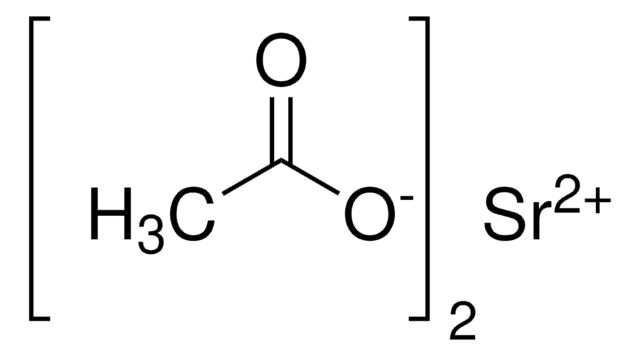추천 제품
Grade
for analytical purposes
분석
≥98%
양식
powder
density
3.7 g/mL at 25 °C (lit.)
SMILES string
[Sr++].[O-]C([O-])=O
InChI
1S/CH2O3.Sr/c2-1(3)4;/h(H2,2,3,4);/q;+2/p-2
InChI key
LEDMRZGFZIAGGB-UHFFFAOYSA-L
유사한 제품을 찾으십니까? 방문 제품 비교 안내
일반 설명
Strontium carbonate is insoluble in water. It is used predominantly in producing other strontium salts.
애플리케이션
Strontium carbonate is used to prepare:
Strontium carbonate is used in pyrotechnics, ceramic ferrites, inexpensive fireworks colorant.
- Barium strontium titanate
- Barium strontium titanate thin films
Strontium carbonate is used in pyrotechnics, ceramic ferrites, inexpensive fireworks colorant.
Storage Class Code
13 - Non Combustible Solids
WGK
nwg
Flash Point (°F)
Not applicable
Flash Point (°C)
Not applicable
개인 보호 장비
Eyeshields, Gloves, type N95 (US)
이미 열람한 고객
Photoluminescence properties of europium doped di-strontium magnesium di-silicate phosphor by solid state reaction method
Sahu IP, et al.
Science, 1-6 (2014)
Effect of process parameters and post deposition annealing on the optical, structural and microwave dielectric properties of RF magnetron sputtered (Ba 0.5, Sr 0.5) TiO 3 thin films
Saravanan K, et al.
Vacuum, 81(3), 307-316 (2006)
Barium strontium titanate powder obtained by polymeric precursor method
Ries A, et al.
Materials Characterization, 50(2), 217-221 (2003)
M Sadeghi et al.
Applied radiation and isotopes : including data, instrumentation and methods for use in agriculture, industry and medicine, 67(1), 7-10 (2008-10-22)
A novel production technique of yttrium-86 based on bombardment of deposited strontium carbonate was investigated. (86)Y was produced via proton-induced reactions on SrCO(3) target that was prepared by the sedimentation method. Production yield of 0.37mCi/microAh at 30 microA was measured
K Sahner et al.
Physical chemistry chemical physics : PCCP, 9(5), 635-642 (2007-01-24)
In the scope of the present contribution, perovskite SrTi(1-x)Fe(x)O(3-delta) was investigated as a model material for conductometric hydrocarbon sensing at intermediate temperatures between 350 and 450 degrees C. To explain the observations made during sensor optimization in a quantitative way
문서
Innovation in dental restorative materials is driven by the need for biocompatible and natural-appearing restoration alternatives. Conventional dental materials like amalgam and composite resins have inherent disadvantages.
자사의 과학자팀은 생명 과학, 재료 과학, 화학 합성, 크로마토그래피, 분석 및 기타 많은 영역을 포함한 모든 과학 분야에 경험이 있습니다..
고객지원팀으로 연락바랍니다.
